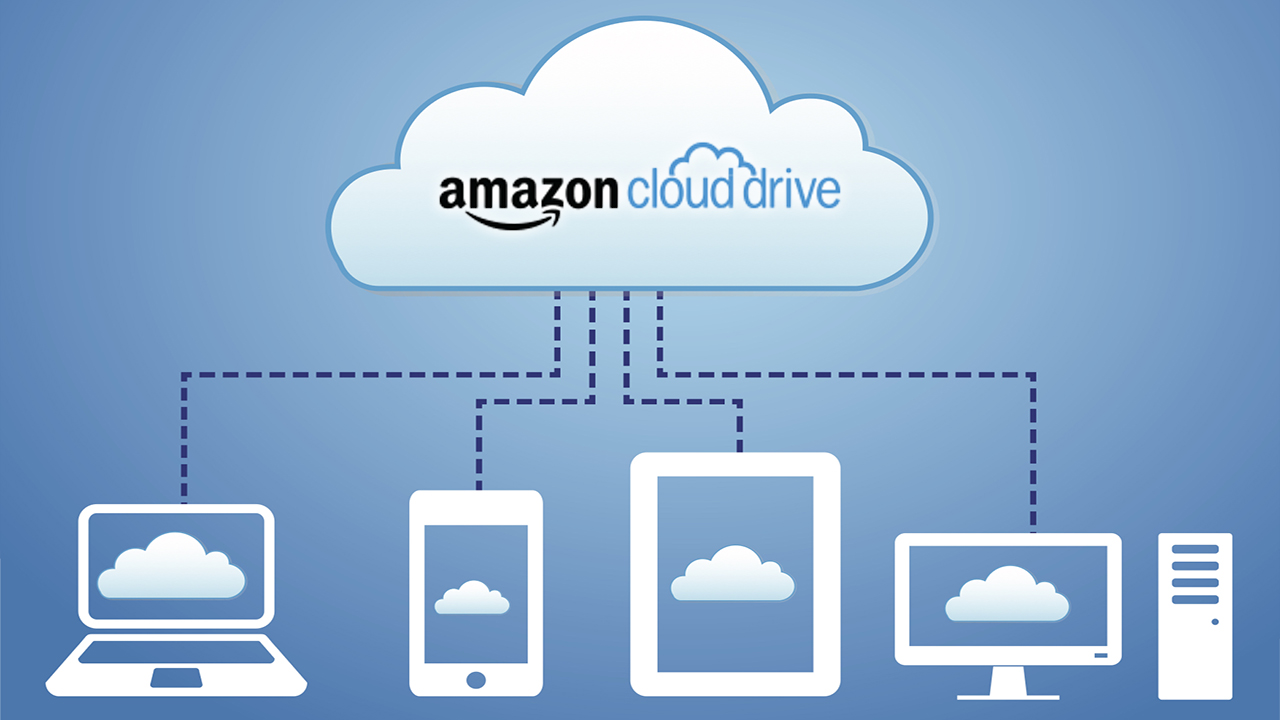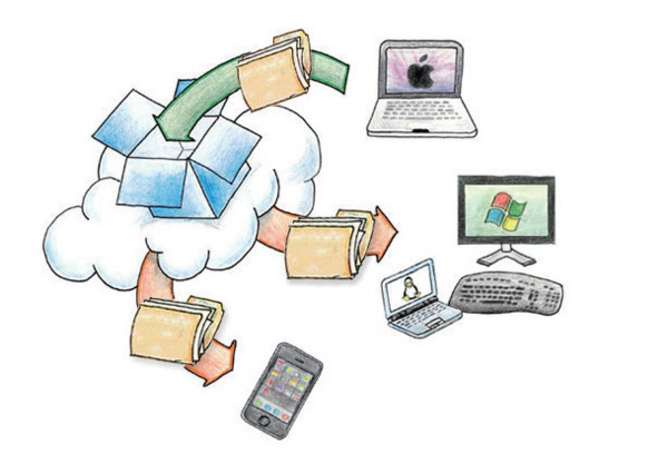Why Amazon Cloud Drive Won’t Replace Dropbox or OneDrive

Like many of you, I was excited to hear about the launch of unlimited storage for Amazon Cloud Drive last week. I’ve been a fan of online storage and syncing services for years, starting with Dropbox in 2008 and moving on to accumulate accounts with Google, Microsoft, and Apple. I still primarily use Dropbox for most of my data syncing needs, but it has become relatively overpriced in recent years as competitors have continued to offer more storage for less money. I remain optimistic about Microsoft OneDrive and the virtually unlimited storage included with an Office 365 subscription, but OneDrive syncing still has some serious problems on both Windows and OS X, and uploading files to the service is ridiculously slow.
Other than experimenting with some photos via a Kindle Fire tablet, I had yet to really dive into Amazon Cloud Drive, which has operated since 2011. Upon learning of the “unlimited storage” offer from Amazon for just $60 per year, however, I was hopeful that a good solution had finally arrived. After all, Amazon Web Services powers much of the modern Web, including bandwidth monsters like Netflix, and if any company can ensure adequate bandwidth, it’s Amazon. But I quickly found out, to paraphrase Obi-Wan Kenobi, that Amazon Cloud Drive is “not the online storage service I’m looking for,” and it’s probably not the one you’re looking for, either.
To me, services like Dropbox offer two important functions: storage and syncing. It’s not enough that my files are stored in the cloud; I also want real-time updates of local copies of those files on all of my devices, ensuring that I have access to the latest Excel spreadsheet or Photoshop image at all times. Dropbox, Google Drive, Microsoft OneDrive, and even Apple’s iCloud Drive all feature local syncing capabilities, allowing me to both store files in the cloud and sync the latest versions of these files to my PC, Mac, smartphone, and tablet. Amazon Cloud Drive, unfortunately, doesn’t offer this capability.
When you first sign up for Amazon Cloud Drive, you’re offered the option to download a desktop application. But instead of providing local syncing capabilities like similar apps provided by other online storage services, you quickly find out that Amazon’s desktop app is just a simple batch uploader, intended to help you get your files into your Amazon Cloud Drive account. Users just drag and drop files and folders onto the Amazon Cloud Drive app, and a shortcut in the app takes you to a Web interface where you can see your files online.
What this all means is that your files are indeed safe and secure in the cloud on Amazon’s servers, and you can access them manually from any device with a modern Web browser, but you’ll also need to manually grab a file if you want to access it, then manually re-upload it to Amazon Cloud Drive when you’re done making any changes.
Compare this relatively laborious process to OneDrive, Google Drive, or Dropbox. With these services, the files you access are stored on your local device, so when you open an Excel spreadsheet, for example, you’re opening the most recent copy of the file on your Mac or PC. When you save this spreadsheet after making changes, one of the aforementioned services detects the change and automatically uploads the new version of the file to the cloud, and then subsequently syncs the changes in the new file to any other synced devices.
Of course, this type of functionality is always optional, and you can configure any of the popular online storage services to operate like Amazon Cloud Drive, with files stored only in the cloud and no local copies synced, but all that does is make it harder to access your data, and it’s not the kind of configuration that most users would prefer. The data syncing described above is the real magic of these services, and with Amazon you’re forced to manually download files you need, or download the entire contents of your Cloud Drive at once, which will quickly become impractical as users take advantage of their “unlimited” storage.
There is, of course, an upside to Amazon Cloud Drive: backup. At $60 per year for virtually unlimited storage capacity, Amazon Cloud Drive offers an affordable solution for those who would like to secure a copy of their data in the cloud, but also maintain reasonable access to it from just about any device. When you limit the service to this framework, Amazon Cloud Drive is a pretty good deal, and I’ll probably keep my subscription active and use it as an extra online repository for photos, music, and other hard-to-replace digital data. But, as it stands now, Amazon Cloud Drive isn’t the online storage and syncing savior for which I had initially hoped, and it looks like I’ll be sticking with Dropbox and OneDrive for the time being.


















30 thoughts on “Why Amazon Cloud Drive Won’t Replace Dropbox or OneDrive”
Versioning has saved me many times and has made the cost of Dropbox well worth it!
For Windows users check C:Users{USERNAME}AppDataRoamingAmazon Cloud Driveamzn1.account.{yourid}-settings.json and change the “SyncPath”
I currently have my sync folder located on an 8TB hard drive without any issues.
I have more than 7.5TB (yes, terabytes) of data that I don’t want to be sync anywhere, but only to stay in the cloud so I don’t run the risk to loose them.
So, Amazon Cloud Drive seems perfect to me.
Than find the provider that fits the requirement .
Amazon great for large file . i mount my Drive do a VPS and run plex on it . for my use only when I travel .
I start using it for my backup of my Synology NAS.
The hyperbackup solution on my Synology NAS supports Amazon Drive as a backup destination (currently as beta), but it seems to work fine so far…
Tip – you can also make a shared drive on the Synology that syncs to Amazon drive. This allows users to access that share locally or remotely and its automatically backed up to Amazon. Very cool stuff. Not to mention, no licensing fees.
run rclone at command line, lot better .
It can do encryption,
mount
sync
copy
decryption
and more
(Yeah you’d have to buy some licenses but it’s a onetime cost.)
But the 10 TB 75% off is still like $130.
So I disagree with this article. Of course, nothing beats google drive, onedrive, dropbox, box, idrive, etc when syncing job is paramount. Which is precisely the reason why they are supposed to be the services you should be seeking out if you are working on files that are regularly updated or modified. Who works and makes changes to a file that has a size of 2 GB anyway? If you are just using word, excel, etc, then the 5 GB of storage offered by any of the above is already an overkill for this purpose alone.
Amazon cloud is for backing up files, like bluray movies, 196/24 audio files, etc. In other words, files that are so big that you would not have the resources to modify them on a regular basis. Imagine backing up your large files via Amazon glacier or Google nearline. They cost around $0.01 per GB but they are so stubbornly slow and you need some advanced level programming background in order to fully utilize their potentials.
This article boldly states that amazon drive won’t replace onedrive or dropbox. But what I say is the opposite: none of the cloud providers in this world can replace amazon cloud drive. None.
And by the way, google drive easily beats onedrive or dropbox at 15 GB free with unlimited sharing.
Is Amazon cloud the only cloud provider in this god-forsaken world? I don’t think so. Amazon has already seen the capabilities of the myriad of syncing drives out there and it has seen that they are doing a great job. Besides, it is already an overcrowded market that is quickly running out of one very important thing: storage capacity.
What amazon wants to do now is to offer something none of these providers can give even in the near future: gigantic storage. And besides, it would be more of a downside if the cloud regularly backs up your files. One single tiny change in the filename will cause the file to be uploaded again. So what if that file were 36 GB? Then you would lose substantial speed and bandwidth utilization during the re-backup process, just like what happened to me when idrive synced my entire C drive without my knowledge.
Is it so hard to drag and drop files to a drive that will save your local drives some precious real estate? Is it so hard to drag and drop your precious files like dragging and dropping them from drive C to drive D? Are we too lazy to let someone else do the transferring of our own files without us knowing which ones have been transferred, when and where?
Are we so obnoxious to trifle on services without realizing their real benefits? Have we lost our sense of what is truly important and easily dismiss things just because they are not tailored to our shallow and ephemeral needs?
Yes.
More seriously, while I appreciate your comments and agree with your thoughts on the benefits of Amazon Cloud Drive, this article’s intent when it was written in March 2015 was to clearly distinguish Amazon Cloud Drive from Dropbox and other similar services. When Amazon upgraded Cloud Drive to “unlimited” storage, there was a flood of articles at other sites proclaiming it to now be the ultimate “Dropbox killer.” I, myself, was also misled by these early reports and the point of this article was not to say that Amazon Cloud Drive has no value, or is “worse” than Dropbox, OneDrive, Google Drive, etc., but to accurately convey to those who are unfamiliar with the service that it likely won’t be a replacement for these more familiar online storage and syncing services.
Your point regarding backing up large files is well taken, and while I don’t know how strictly Amazon enforces this, but their terms of service clearly state that users are not allowed to store copyrighted content on Amazon Cloud Drive without authorization from the copyright holder. This means that backing up your purchased digital music files from iTunes, for example, would be OK because the user is licensed to hold that music in its digital form, but ripping and backing up a Blu-ray would not be OK, because users aren’t legally authorized (in the United States, at least) to break DRM and copy the movie from the disc to a digital file. I’m not making any moral arguments here (I personally think that there is no moral issue with backing up your own purchased content in another format), but just don’t be surprised if Amazon suspends your account for uploading Blu-ray rips and MP3 downloads.
Dunno about others but Dropbox syncs incrementally only the byte that has been changed. So in your case, only few bytes would be synced, eliminating the problem you have described. Tho unfortunately not all cloud services do that.
Anyway, put these two products together and it’s not a bad package for unlimited storage with sync.
There is no way.
What good is the cloud if it doesn’t sync?
I prefer Amazon in this case too, however, the way to access files here is completely 100% off base.
They offered unlimited storage and handicapped the ability to utilize it.
Until that changes (read I’m not paying $50 more for Netdrive) Dropbox still owns the game.
Space means nothing if it takes me 10x longer to utilize it efficiently.
At this point I’ve lost faith in Amazon Cloud Drive, and feel if they’re capable of this level of deception, they may just scrap they whole project and commit their available space and attention to a new opportunity that may arise. Very sad about this, and a bit shaken that I ever trusted them. I apologize to anyone I directed and will never suggest a single soul trust Amazon in the future. All should now heed any dependence on this company.
First problem with Amazon Cloud Drive: the web interface only allows single file uploads at a time: a folder of 10,000 images would take YEARS to upload. So, the only way to realistically use Amazon Cloud Drive is via the desktop App. After re-learning rsync for B2 I was excited to have an App. Until I started using it.
The desktop App (for OS/X at least) limits uploads to 4 files at a time or you can limit it to a certain bandwidth. This worked fine for folders of RAW image files at 12-18MB each. But a folder of <100kb files kept my 1GB upload pipe tied up all night and only about half the files uploaded. There seems to be a LOT of processing overhead associated with uploading files.
And apparently the desktop App does not retain the list of files and folders in your Amazon Cloud Drive account. I don't want it to keep the files, but a *list* of the files and folders would be nice.
So every time I start the desktop App it downloads an arbitrary quantity of information (often 20-30MB) each time at ~24kb/sec before the folder list will display. This 5-20 minute delay prevents getting on with my workday: which costs me money.
Another issue: while it appears to be a single App, the upload and download windows don't seem to communicate with one another. Even after uploading a file, I tried to download a file as a test and had to wait for the App to *AGAIN* refresh the list of files and folders before I could navigate the file list. And each folder I opened caused the spinning-wheel-of-death to appear for minutes on end.
Based on the time I would spend uploading files to Amazon Cloud Drive I'm better off continuing to pay a couple hundred dollars a year in storage costs to B2.
To compare: B2's Backblaze takes advantage of my full bandwidth with no limit on the number of simultaneous file uploads. And it allows you to sync so only NEW files are processed and uploaded/downloaded. A much better way to keep my longterm storage updated.
The only PC based app available allows for bulk uploads and download…of only the entire contents! The web based interface does not work. I’ve tried it with Chrome, Firefox, IE 11 and the newer Edge browsers. All with the same results. When you try to view all files it is hit or miss (mostly miss) if it will actually display he contents of a given folder.
Add everything you read above and the fact that the tools provided are at best a failed HS experiment, I don’t care if they give away the service for free…it’s simply not worth it!
I send a detailed list of concerns to Amazon support a week ago. I have yet to even receive a reply stating they received my input let alone a reply as to what they may or may not be doing to address my issues. I love Amazon for all they do with on-line shopping, Kindle, Fire TV, etc. This is FAILED attempt to provide a world-class service on par with everything else they do is very disconcerting.
Come on Amazon, act like the world-class leader you are in Web Services!
So the synchronizing problem of Amazon was totally solved. It works like a charm.
As for a decent conduit, I’ve tried ExpanDrive (not free and which mounts various cloud storage services as disks on your Mac) and “odrive” (has a free version).
“odrive” syncs ACD in a Dropbox/Google Drive sort of way. It has an additional feature of “unsyncing’ files/folders once they’re uploaded…removes the file/folder data from your computer to free up space. I’m not sure it works that well.
https://www.odrive.com